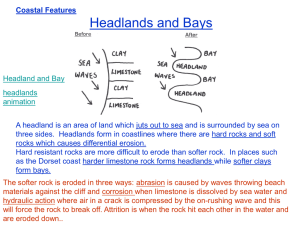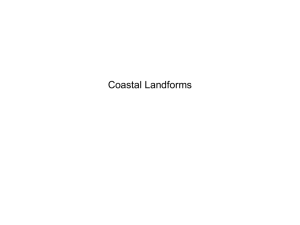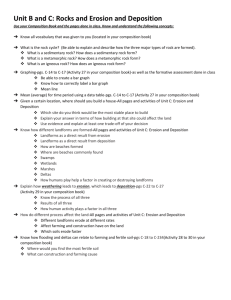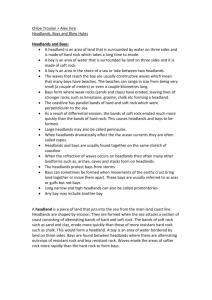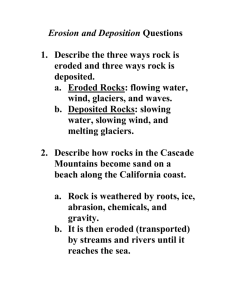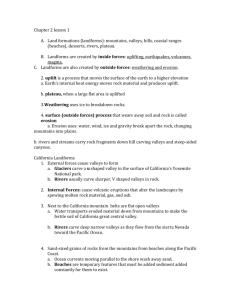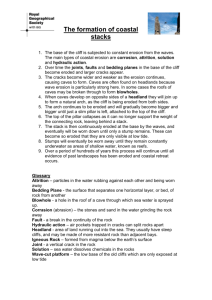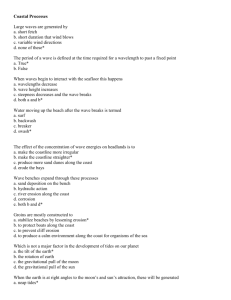Coastal Landforms Revision Sheet
advertisement
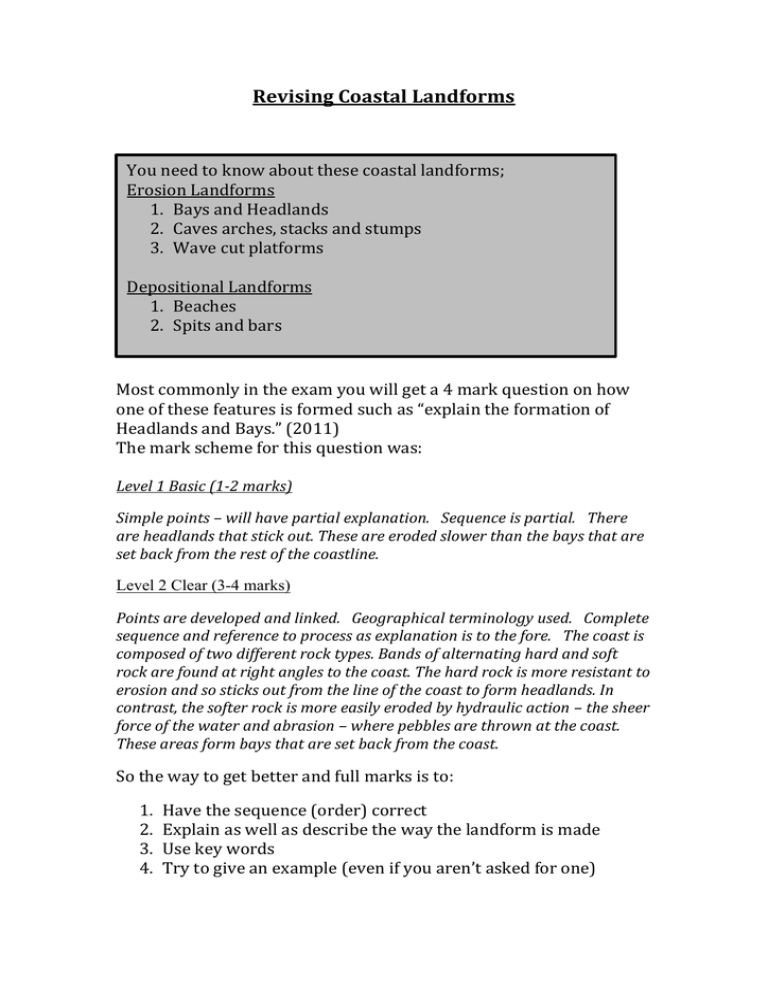
Revising Coastal Landforms You need to know about these coastal landforms; Erosion Landforms 1. Bays and Headlands 2. Caves arches, stacks and stumps 3. Wave cut platforms Depositional Landforms 1. Beaches 2. Spits and bars Most commonly in the exam you will get a 4 mark question on how one of these features is formed such as “explain the formation of Headlands and Bays.” (2011) The mark scheme for this question was: Level 1 Basic (1-2 marks) Simple points – will have partial explanation. Sequence is partial. There are headlands that stick out. These are eroded slower than the bays that are set back from the rest of the coastline. Level 2 Clear (3-4 marks) Points are developed and linked. Geographical terminology used. Complete sequence and reference to process as explanation is to the fore. The coast is composed of two different rock types. Bands of alternating hard and soft rock are found at right angles to the coast. The hard rock is more resistant to erosion and so sticks out from the line of the coast to form headlands. In contrast, the softer rock is more easily eroded by hydraulic action – the sheer force of the water and abrasion – where pebbles are thrown at the coast. These areas form bays that are set back from the coast. So the way to get better and full marks is to: 1. 2. 3. 4. Have the sequence (order) correct Explain as well as describe the way the landform is made Use key words Try to give an example (even if you aren’t asked for one) To help you gain top marks in such questions we have designed these revision aids for each of the landforms you need to know about. Simply arrange these statements into the correct order. When you go in to the exam you should be confident that you know how to explain how any of these has been formed. Bays and Headlands 1/ More resistant rock (e.g. chalk) erodes more slowly 2/ There are alternating bands of more and less resistant rock facing the coast 3/ Some rocks are more resistant 4/ Less resistant rock (e.g. clay) to erosion than others is eroded more quickly 5/ This is then left sticking out to see to form a headland 6/ This forms a bay 7/ The eroded material from the 8/ (mention a type of erosion and headland and can get transported transportation at the correct in here and form a beach places) Example: Swanage bay and Old Harry’s rocks Caves, arches, stacks and stumps 1/ Waves crash into the headlands and expand the cracks 2/ Continued erosion deepens the cave until it forms and arch. 3/ The arch also get eroded till it collapses forming a stack 4/ Headlands are made of more resistant rocks, but still have cracks and weaknesses in them 6/ Waves undercut the arch until it collapses to leave a stump 5/ Repeated expansion of the cracks causes a cave to form. 7/ What part of this process is similar to wave cut platform formation? 8/ mention hydraulic action and abrasion at the right place) An example of an Arch is ‘Durdle Door’, a stack is ‘Bats head’ and a stump is called ‘the blind cow’ (all from Lulworth trip) Wave Cut Platforms 1/ Once it is unprotected again the sea erodes and another wave cut notch is created. 3/ This undercuts the rock above which becomes unstable and collapses 5/ Repeated collapses causes cliff retreat 7/ This causes a wave cut notch to appear 2/ A wave cut platform is created. This is normally only visible at low tide 4/ Waves cause most erosion between high tide and low tide marks at the foot of the cliff 6/ The collapsed material temporarily protects the cliff but is transported away 8/ When might abrasion most likely occur? What other types or erosion might take place? Beaches 1/ Because the constructive wave runs out of energy after their swash. Material therefore gets deposited on the beach 3/ Constructive waves have a strong swash but a weak backwash 5/ Sandy beaches are flatter as sand is light and can be transported back down the beach 7/ 2/ That means material is transported up the beach but not back down 4/ Shingle beaches are steeper as shingle is heavier and cannot be transported back down the beach 6/ 8/ (mention types of transportation) Spits (spits are just beaches that stick out into the sea) 1/ The spit protects the area behind from waves 2/ Long shore drift transports material along the beach 3/ Prevailing wind creates Long shore drift. 4/ Less wind means less energy in the waves and so material continues to be deposited 6/ This deposited material builds out to sea forming a spit. 5/ A change in direction of the coastline can create an area sheltered from the wind 7/ Where there are no waves lots 8/ This protected area can more material collects and plants eventually become a mud flat or can grow salt marsh 9/ (mention types of transportation and reasons for deposition) An example is Hurst Spit in Hampshire or Spurn Head on the Holderness Coast Bars A bar is when a spit grows long enough to join up two headlands 1/ A lagoon is created behind the 2/ It grows across the whole bay bar 3/ The spit develops

